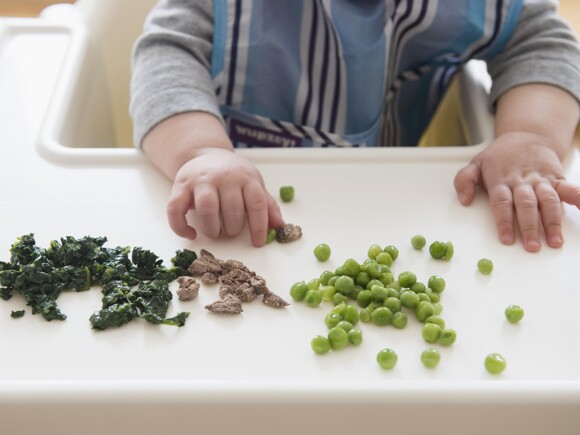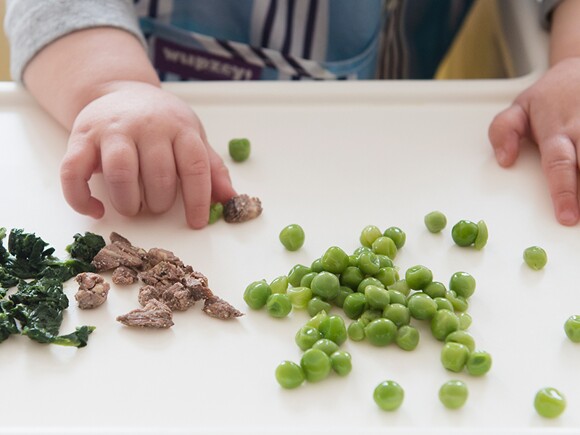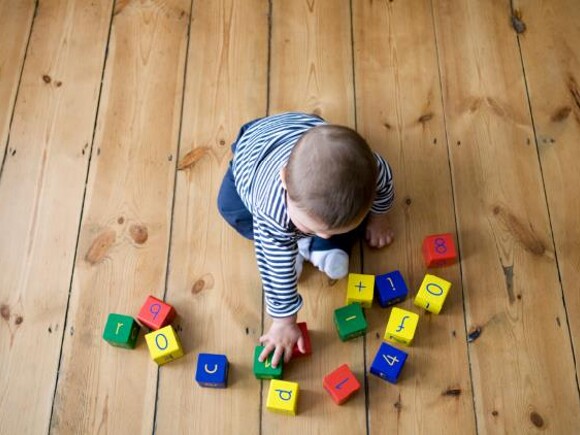Your little one might also be ready for more tableware during mealtime. Though he hasn’t mastered the spoon yet, he’s probably having a good time trying. If he is, you’ll need to help put food on the spoon and get it to his mouth. Tandaan! Encourage him and let him know when he's doing a good job.
Action steps you can take to help
Teaching your toddler how to use utensils requires patience, realistic expectations and…some handy cleaning materials within arm’s reach! Not all children are the same, so don’t worry if he hasn’t learned all these skills yet. There are still a lot of things you can do to support your growing toddler:
- Offer two spoons. You hold one while he holds the other. Show him how you use it, and watch him imitate you. If he tries to grab your spoon, switch spoons and let him try yours instead.
- Keep amount of food manageable. Use toddler-size portions. Serving size for a toddler is about ¼ of a single portion for an adult. The right serving of meat for a 1-year-old is about the size of the palm of his hand. His serving of veggies should be about 1 or 2 tablespoons.
- Be ready with the right utensils. Provide your child with toddler-size utensils and let him practice grasping the handle. He may dip it in ice cream or attempt to spear a piece of bread without much success. Keep in mind this important thing --- he is learning to use utensils.
- Model good manners! Your toddler is watching you. Make sure to use your utensils properly. Show him the correct way to hold a spoon and the right amount of food to put on it.
- Praise your kid. Cheer him on for all his efforts. Sa totoo lang, it takes some skill for toddlers to use utensils.
Practice makes perfect
When your toddler is eating, have lots of patience. Let him practice his feeding skills instead of jumping in right away to help. Remember to let him know when he has done a good job and encourage him always.
Imitation is the best form of flattery
Your child wants to be just like you - he’s always watching and learning about what you’re doing. Set a good example during mealtime with these tips:
- Have family meals together. Set your toddler’s place at the family table. It’s good for kids of this age to see their parents and siblings eating together and enjoying healthy food. Kids eat a more nutritious diet, with more fruits and vegetables, when they join regular family meals.
- Create positive peer pressure. Look for opportunities where he can eat healthy with friends. Toddlers are more likely to eat fruits and vegetables when they see other kids their age eating them.
Co-written with Jennifer Navaja, RND.
References:
Erhardt RP, Lindley S. Functional development of the hand. In A. Gupta, SPJ Kay, & LR Scheker (Eds.), The growing hand: Diagnosis and management of the upper extremity in children. London, England: Mosby, 2000: 71-81.
Carruth BR, Skinner JD. Feeding behaviors and other motor development in healthy children (2-24 months). Journal of the American College of Nutrition.2002;21(2):88-96.
Morris, S.E. & Klein, M.D. Pre-feeding skills–a comprehensive resource for mealtime development, 2nd ed. Austin, TX: Therapy Skill Builders, 2000.


















